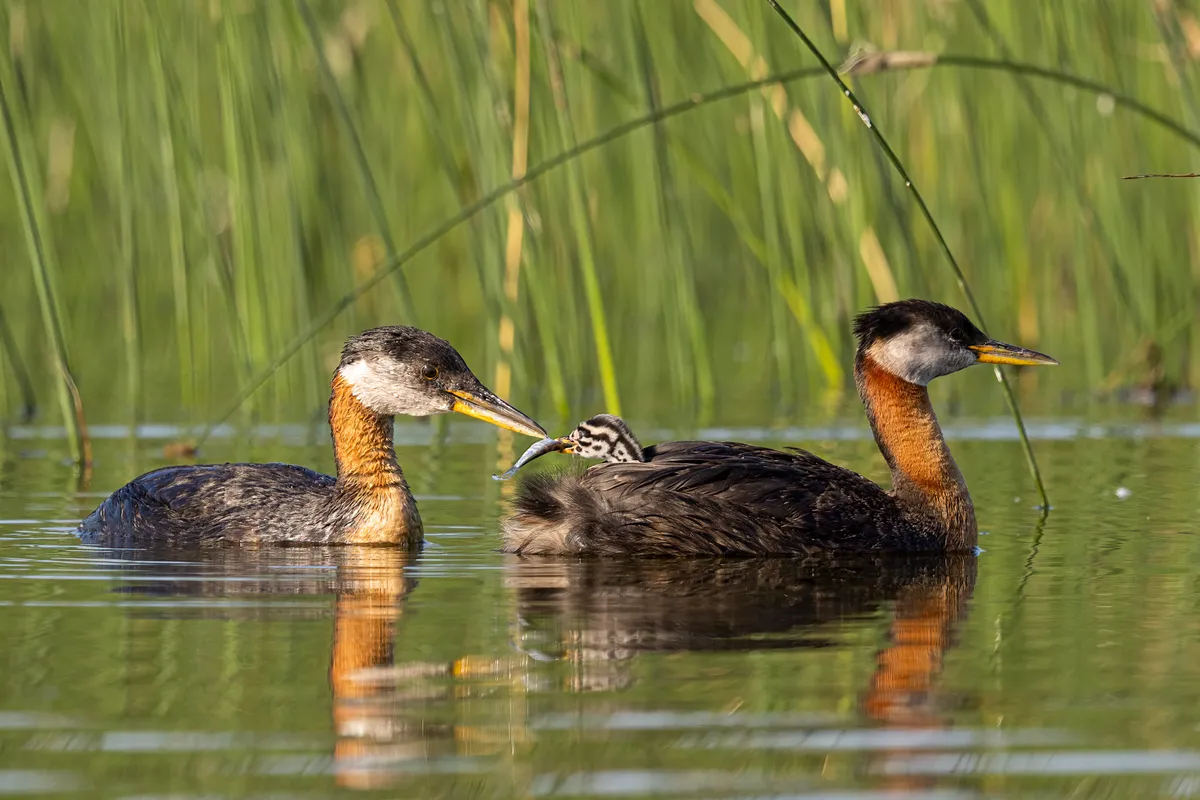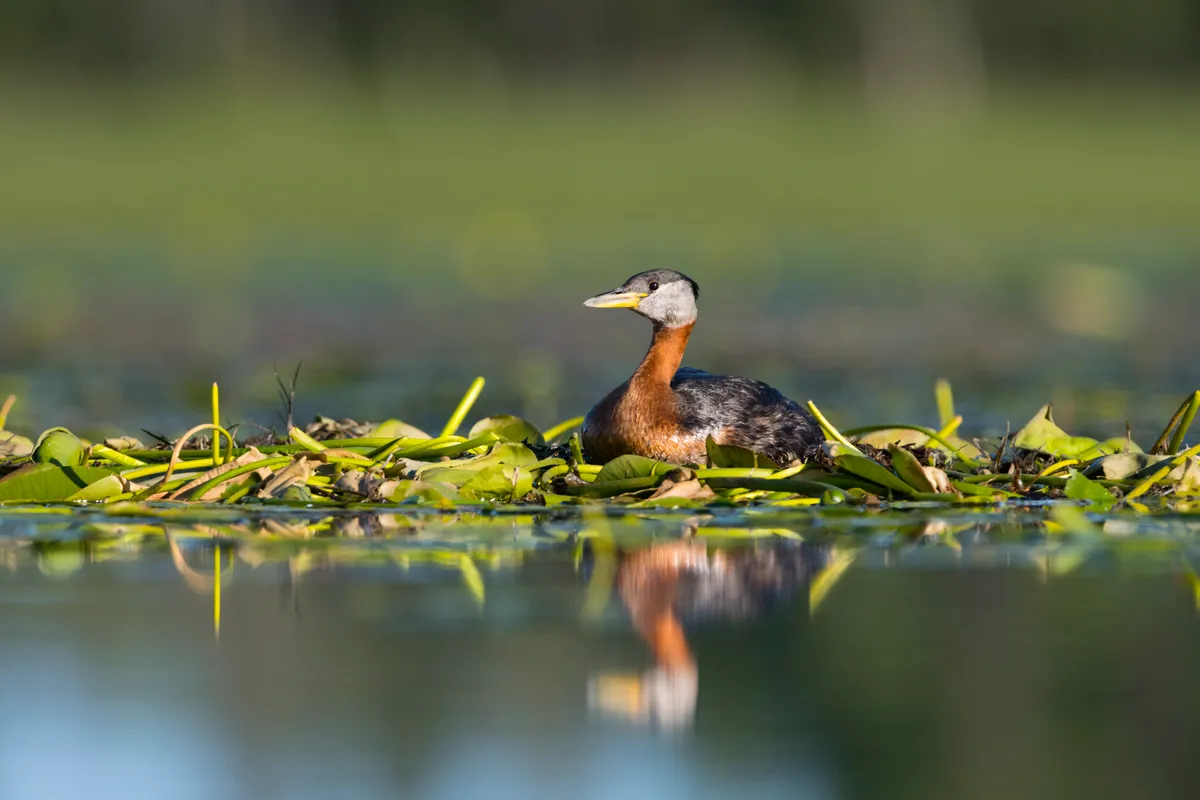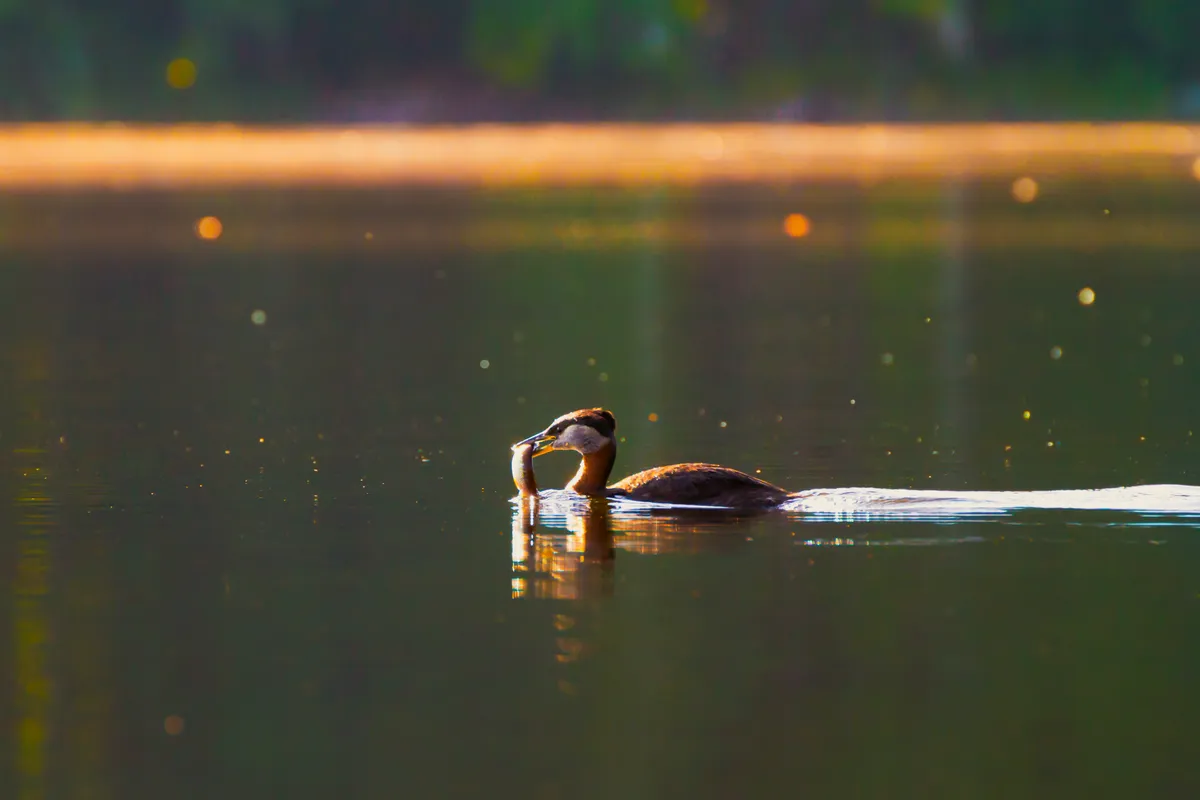If you’re lucky enough to come across a red-necked grebe (Podiceps grisegena), you'll probably think it looks a bit like a “funny” great crested grebe, or a cross between a great crested and a Slavonian grebe – it has the former’s size but the latter’s shape.
This is a continental species that has bred in Britain but is becoming rarer. You only ever see this species as a single bird, looking as though in a moment of inspiration it booked a “different” winter break, but is slightly miserable for it.
In this guide we take a closer look at the red-necked grebe, revealing what it looks like, where you can see it, nesting habits, call and plumage.
Interested in learning more about Britain’s waterbirds? Read our guides to wading birds, swans, rails and geese.

- British duck guide: identification, species, facts and where to see
- Guide to British seabirds: how to identify and where to see them
- Tern guide: UK species and how to identify them
How to identify a red-necked grebe
The classic unarguable feature of a red-necked grebe is its yellow-based bill, which you can see all year round.
If you have a really good encounter, you might also see that the bill is shorter than a great crested’s, and thicker at the base, more like a dagger.
In breeding plumage, the neck is indeed a lovely shade of reddish-brown, and the cheeks are blazing white, contrasting with the neck and the broad black crown.
In winter, the red-necked has a much duskier neck than a great crested (or Slavonian) grebe, but birdwatchers see this species so seldom that identifying it is always a challenge.
Credit: Cornell Lab of Ornithology
Red-necked grebe breeding and nesting

Its rarity in Britain is a shame, because we miss out on a real character, a thoroughly noisy and overbearing species. Where it breeds it is famously pugnacious and will attack anything in its territory, even killing unrelated bird species; it often nests near coots, too, those equally highly strung waterbirds, which must make for an overwrought atmosphere.
Red-necked grebe call
It is also extremely noisy, and will apparently call for many minutes on end, and will even keep chittering away during the night. Woe betide any introverts on a marsh near this species.
Red-necked grebe diet

The stout bill shows that the red-necked grebe has quite a different diet to the great crested grebe. It takes far fewer fish, and many more insects and other invertebrates.
Red-necked grebe population
The red-necked grebe is rare (Red List of Conservation Concern), with a maximum of 60 individuals over winter.
